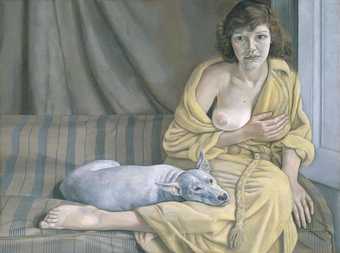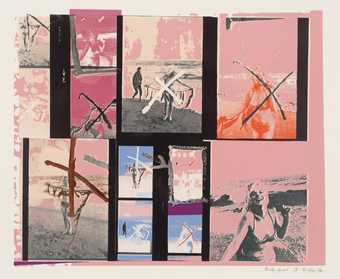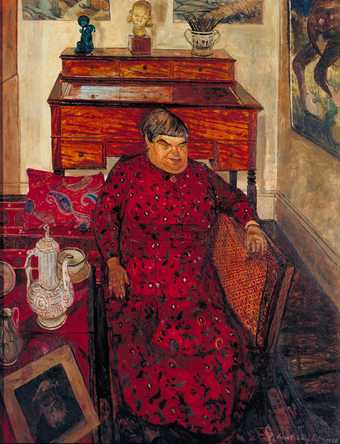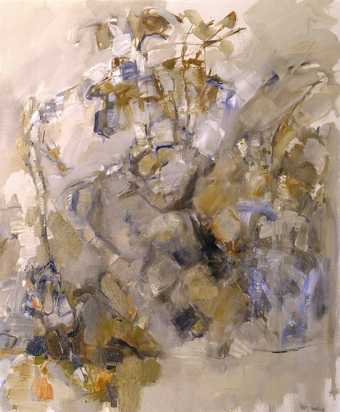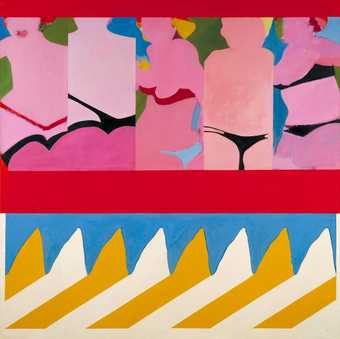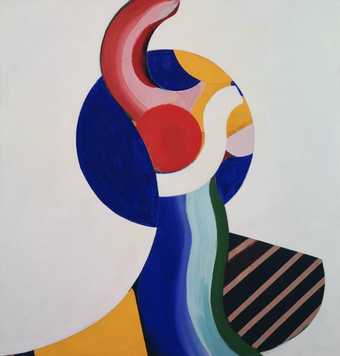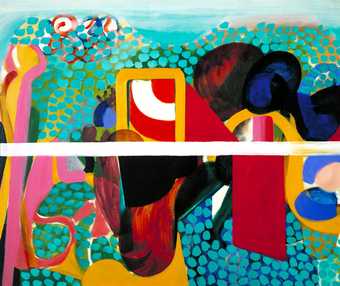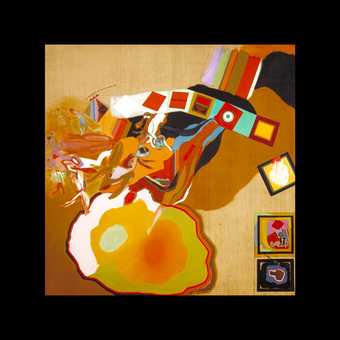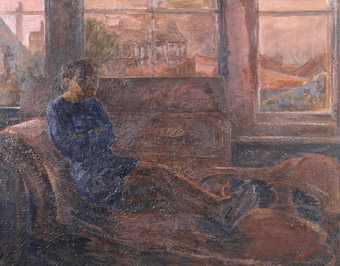
In Tate Britain
- Artist
- Pauline Boty 1938–1966
- Medium
- Oil paint on canvas
- Dimensions
- Support: 1224 × 1530 × 25 mm
frame: 1236 × 1541 × 28 mm - Collection
- Tate
- Acquisition
- Purchased 1999
- Reference
- T07496
Display caption
Pop artists were fascinated by Marilyn Monroe as the most famous of movie stars and the epitome of a new sexuality. Most responses to her were made by men, however. Boty was one of the few women artists working in this vein and perhaps that gave her a different view on Marilyn.Is the figure isolated by being squeezed between fields of abstract forms? Is the title ironic? Boty’s work was sometimes concerned with gender and sexuality and so it is ironic, that she was herself frequently discussed in terms of her appearance.
Gallery label, May 2007
Does this text contain inaccurate information or language that you feel we should improve or change? We would like to hear from you.
Film and audio
Explore
- abstraction(8,615)
-
- non-representational(6,161)
-
- irregular forms(2,007)
- formal qualities(12,454)
-
- colour(836)
- Monroe, Marilyn(27)
- individuals: female(1,698)
- lifestyle and culture(10,247)
-
- cultural icon(63)
You might like
-
Lucian Freud Girl with a White Dog
1951–1952 -
Richard Hamilton My Marilyn
1965 -
Carel Weight Miss Orovida Pissarro
1956 -
Jean Cooke (Jean Bratby) Self-Portrait
1958 -
Robert Medley A Tree Study
1959 -
Antony Donaldson Take Five
1962 -
Bernard Cohen In That Moment
1965 -
Patrick Caulfield Battlements
1967 -
Howard Hodgkin Mrs Nicholas Monro
1966–9 -
Howard Hodgkin Dinner at West Hill
1964–6 -
William Roberts L’Algérienne
1962 -
Allen Jones The Battle of Hastings
1961–2 -
John Lessore Annonciade
1961–77 -
Bryan Wynter Mars Ascends
1956 -
Lucian Freud Girl in a Striped Nightshirt
1983–5

